NASA selects SES Government Solutions to support Near-Earth communications
Wednesday, 11 May 2022 02:48 SES Government Solutions (SES GS), a wholly-owned subsidiary of SES, in partnership with Planet Labs PBC (Planet), has been awarded a Funded Space Act Agreement from NASA's Communications Services Project (CSP) to support the development and demonstration of near-Earth communication services in support of the agency's future mission needs.
SES GS will partner with Planet to develop a real-
SES Government Solutions (SES GS), a wholly-owned subsidiary of SES, in partnership with Planet Labs PBC (Planet), has been awarded a Funded Space Act Agreement from NASA's Communications Services Project (CSP) to support the development and demonstration of near-Earth communication services in support of the agency's future mission needs.
SES GS will partner with Planet to develop a real- Terran Orbital ships CAPSTONE satellite to New Zealand for Rocket Lab launch vehicle
Wednesday, 11 May 2022 02:48 Terran Orbital Corporation (NYSE: LLAP), a global leader in satellite solutions, primarily serving the United States aerospace and defense industry, has announced it has shipped its CAPSTONE satellite to a launch site on the Mahia Peninsula of New Zealand. CAPSTONE will launch on a Rocket Lab Electron rocket using a Lunar Photon satellite upper stage to send the spacecraft on its planned lunar t
Terran Orbital Corporation (NYSE: LLAP), a global leader in satellite solutions, primarily serving the United States aerospace and defense industry, has announced it has shipped its CAPSTONE satellite to a launch site on the Mahia Peninsula of New Zealand. CAPSTONE will launch on a Rocket Lab Electron rocket using a Lunar Photon satellite upper stage to send the spacecraft on its planned lunar t Blue Origin NS-21 to fly six customer astronauts
Wednesday, 11 May 2022 02:48 Blue Origin has announced the crew flying on its NS-21 mission will include: investor and NS-19 Astronaut Evan Dick; electrical engineer and former NASA test lead Katya Echazarreta; business jet pilot and Action Aviation Chairman Hamish Harding; civil production engineer Victor Correa Hespanha; adventurer and Dream Variation Ventures co-founder Jaison Robinson; and explorer and co-founder of pri
Blue Origin has announced the crew flying on its NS-21 mission will include: investor and NS-19 Astronaut Evan Dick; electrical engineer and former NASA test lead Katya Echazarreta; business jet pilot and Action Aviation Chairman Hamish Harding; civil production engineer Victor Correa Hespanha; adventurer and Dream Variation Ventures co-founder Jaison Robinson; and explorer and co-founder of pri Virgin Orbit to expand fleet with modification of second airborne satellite launchpad
Wednesday, 11 May 2022 02:48 Virgin Orbit (Nasdaq: VORB), a leading satellite launch company, has signed an agreement with L3Harris Technologies (NYSE:LHX) to acquire two Boeing 747-400 airframes to support the growing need for U.S. national security and allies' satellite launch demands.
L3Harris will modify one of the newly acquired aircrafts to serve as an additional airborne launch pad for Virgin Orbit's small sate
Virgin Orbit (Nasdaq: VORB), a leading satellite launch company, has signed an agreement with L3Harris Technologies (NYSE:LHX) to acquire two Boeing 747-400 airframes to support the growing need for U.S. national security and allies' satellite launch demands.
L3Harris will modify one of the newly acquired aircrafts to serve as an additional airborne launch pad for Virgin Orbit's small sate Students compete to improve everyday life on the Space Station
Wednesday, 11 May 2022 02:48 Textbooks teach concepts, but hands-on learning is the pathway to understanding, especially in careers that involve science, technology, engineering and math, or STEM. Connect that to real projects on the International Space Station and you've got NASA's HUNCH (High school students United with NASA to Create Hardware) program.
The sheer excitement of creating solutions for astronauts on th
Textbooks teach concepts, but hands-on learning is the pathway to understanding, especially in careers that involve science, technology, engineering and math, or STEM. Connect that to real projects on the International Space Station and you've got NASA's HUNCH (High school students United with NASA to Create Hardware) program.
The sheer excitement of creating solutions for astronauts on th Space For Humanity to send its first Citizen Astronaut on next New Shepard flight
Wednesday, 11 May 2022 02:48 Today, Space For Humanity (S4H), a 501(c)(3) nonprofit organization, announced its selection committee has chosen Katya Echazarreta to become the organization's first ever citizen astronaut ambassador. Katya will become the first Mexican-born female to fly to space when she flies aboard Blue Origin's NS-21 flight.
Katya, an electrical and computer engineer and online science educator, was
Today, Space For Humanity (S4H), a 501(c)(3) nonprofit organization, announced its selection committee has chosen Katya Echazarreta to become the organization's first ever citizen astronaut ambassador. Katya will become the first Mexican-born female to fly to space when she flies aboard Blue Origin's NS-21 flight.
Katya, an electrical and computer engineer and online science educator, was DoD inspector general finds nothing improper in U.S. Space Command basing decision
Wednesday, 11 May 2022 00:07
The IG determined that the U.S. Space Command basing decision "complied with Federal Law and DoD policy and that the process was reasonable"
The post DoD inspector general finds nothing improper in U.S. Space Command basing decision appeared first on SpaceNews.
Maxar eyes customers for mobile terminals that downlink satellite imagery in the field
Tuesday, 10 May 2022 23:03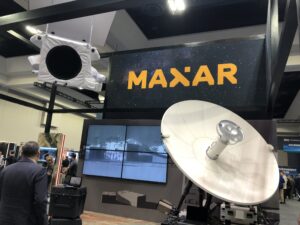
As Maxar continues to see high demand for satellite imagery, it is looking to attract customers for its mobile terminals that give users direct access to the company’s imaging satellites.
The post Maxar eyes customers for mobile terminals that downlink satellite imagery in the field appeared first on SpaceNews.
Space Force to invest in testing infrastructure to evaluate new systems
Tuesday, 10 May 2022 20:18
The U.S. Space Force in a vision document calls for the service to invest in infrastructure and a skilled workforce to support the testing of new satellite designs and other systems.
Strong solar flare erupts from sun
Tuesday, 10 May 2022 20:04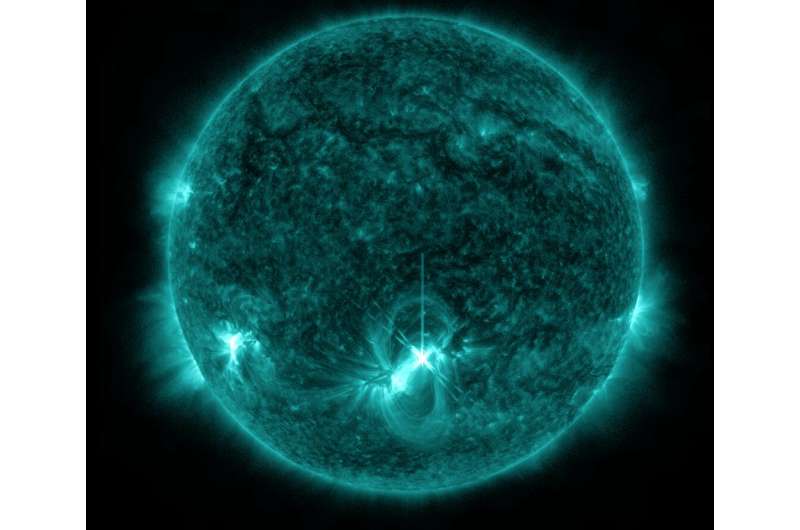
The Sun emitted a strong solar flare on Tuesday, May 10, 2022, peaking at 9:55 a.m. EDT. NASA's Solar Dynamics Observatory, which watches the sun constantly, captured an image of the event.
Spire Global adding high-capacity Ku-band antennas to satellites
Tuesday, 10 May 2022 19:11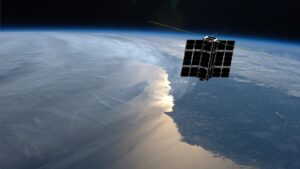
Spire Global said May 10 it is installing Ku-band antennas from fellow smallsat operator Kepler Communications on at least three satellites to offer higher capacity data services beginning next year.
The post Spire Global adding high-capacity Ku-band antennas to satellites appeared first on SpaceNews.
Op-ed | The Fundamentals of a Healthy Space Ecosystem
Tuesday, 10 May 2022 16:03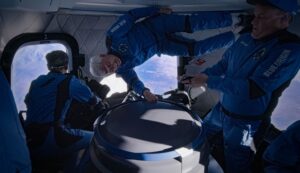
The health and stability of the space ecosystem largely depend on a few core areas: education, access to data and information and collaboration, writes Voyager Space Holdings CEO Dylan Taylor.
The post Op-ed | The Fundamentals of a Healthy Space Ecosystem appeared first on SpaceNews.
China announces its new flagship space telescope mission
Tuesday, 10 May 2022 15:14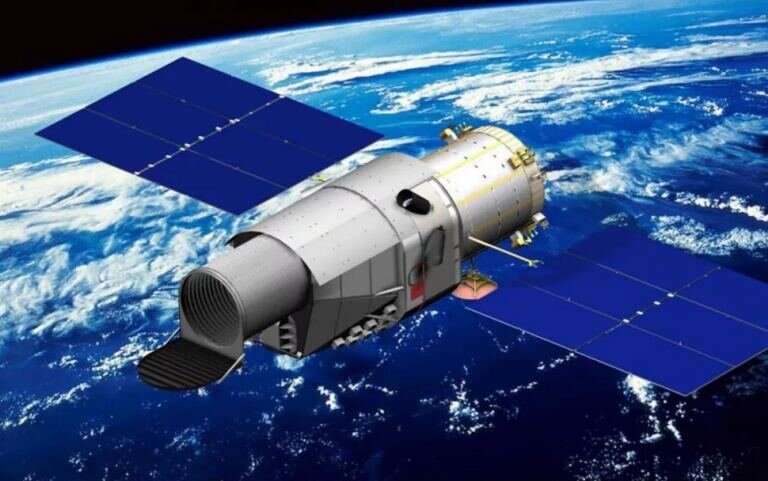
Distant galaxies, dark matter, dark energy and the origin and evolution of the universe itself are some of the many scientific goals of China's newly announced space telescope. If all goes according to plan, the China Space Station Telescope (CSST) will blast off atop a Long March 5B rocket sometime in late 2023. Once in a safe orbit, CSST should begin observations in 2024. Judging by these research topics, it looks like the Chinese Academy of Sciences is throwing down an impressive scientific gauntlet for itself and its astronomers.
What it means to have a space telescope
Owning and operating a space telescope really opens the doors to a treasury of information about the universe. Certainly, that's what motivated the creation of the Hubble Space Telescope (HST). The dream of cosmic exploration motivated Hermann Oberth in the 1920s to write semi-science-fictional treatises about orbiting telescopes on asteroids.
India, France agree to cooperate on secure access to outer space, space-based challenges
Tuesday, 10 May 2022 12:14
India and France have agreed to cooperate to tackle “contemporary challenges that have arisen in space,” including secure access to outer space.
The post India, France agree to cooperate on secure access to outer space, space-based challenges appeared first on SpaceNews.
National Reconnaissance Office partners with U.K. on space mission to fly on Virgin Orbit rocket
Tuesday, 10 May 2022 11:21
The U.S. National Reconnaissance Office and the United Kingdom’s Ministry of Defense will launch a joint mission this summer on Virgin Orbit’s LauncherOne rocket.
